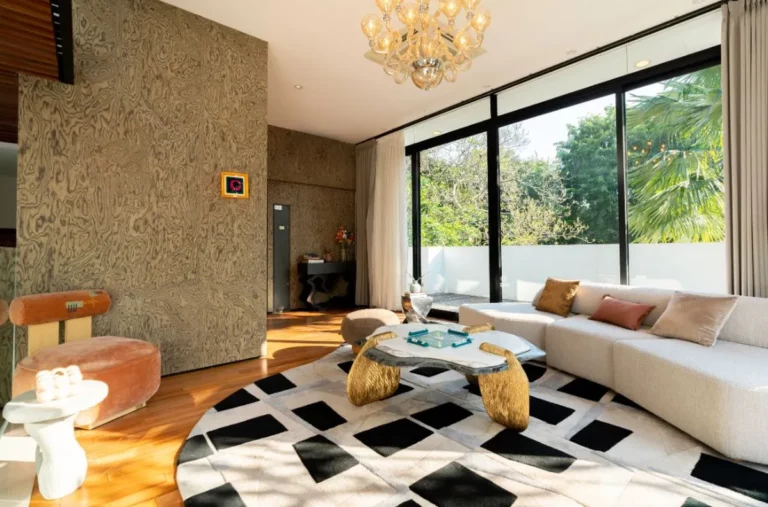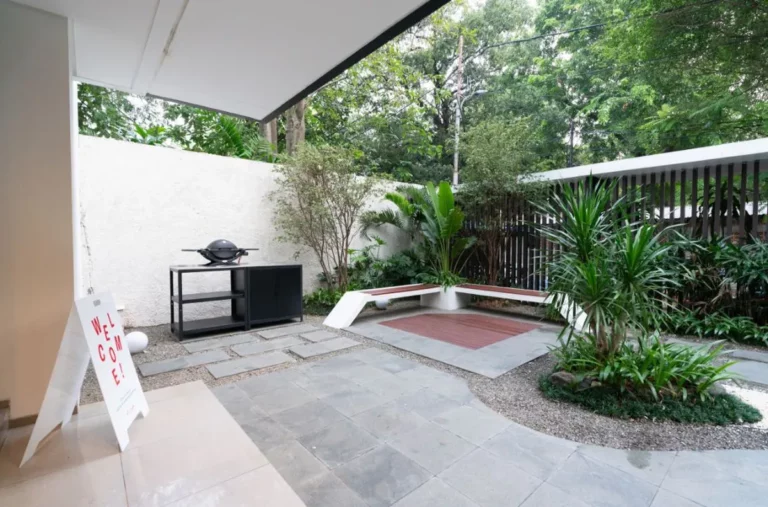While Harlem is globally celebrated for its iconic venues that launched legendary musicians and cultural icons, a rich and often overlooked aspect of its artistic history lies in the secret, lesser-known spaces that served as incubators for innovation and creativity. These hidden sanctuaries played a crucial role in shaping the cultural landscape of Harlem, fostering talents who would go on to influence art, music, and social movements nationwide. Exploring these concealed environments provides a deeper understanding of Harlem’s dynamic artistic legacy and reveals how grassroots, informal spaces contributed to its vibrant cultural history.
- Exploring Harlem’s Lesser-Known Artistic Nooks: An Introduction to Hidden Spaces
- The Genesis of Artistic Pioneers in Harlem’s Secluded Spaces
- Architectural and Spatial Characteristics of Harlem’s Hidden Artistic Spaces
- Cultural Contributions Emerging from Harlem’s Concealed Artistic Enclaves
- Challenges Faced by Artists and Creators in Concealed Spaces
- The Role of Community and Social Networks in Sustaining Hidden Spaces
- Modern Revivals and Recognition of Harlem’s Secret Artistic Spaces
- Connecting Hidden Artistic Spaces to the Broader Harlem Legacy
1. Exploring Harlem’s Lesser-Known Artistic Nooks: An Introduction to Hidden Spaces
a. Defining “hidden” and “lesser-known” in Harlem’s cultural landscape
In the context of Harlem’s rich artistic history, “hidden” and “lesser-known” spaces refer to venues and environments that operated outside the mainstream spotlight. Unlike iconic clubs such as the Cotton Club or Apollo Theater, these spaces often existed in basements, abandoned buildings, or private lofts, accessible only to select community members or emerging artists. These environments fostered a sense of intimacy and experimentation, providing safe havens for avant-garde performances, underground jazz sessions, poetry readings, and visual art workshops. Their clandestine nature allowed artists to explore new ideas away from commercial pressures and societal scrutiny.
b. The importance of these spaces in shaping local and national cultural identities
Although less visible, these secret venues were instrumental in nurturing talents who would later influence the wider cultural scene. Many pioneering jazz musicians, poets, and visual artists began their careers in these informal settings, gaining confidence and honing their craft before stepping into the limelight. These spaces fostered a grassroots movement that contributed significantly to Harlem’s reputation as a birthplace of innovation, influencing national cultural identities and social consciousness. This underground culture often served as a testing ground for ideas that would later permeate mainstream art and music.
c. Transition from well-known venues to secret artistic sanctuaries
While well-known venues attracted larger audiences and media attention, they often overshadowed the quiet but equally vital contributions of underground spaces. Today, historians and artists increasingly recognize the importance of these hidden environments. Their transition from clandestine gatherings to celebrated historical sites underscores a deeper appreciation for grassroots creativity. For example, the discovery of old basement jazz clubs or private loft galleries reveals a layered narrative of Harlem’s artistic evolution, connecting past and present in a continuum of cultural resilience.
2. The Genesis of Artistic Pioneers in Harlem’s Secluded Spaces
a. Personal stories: how individual pioneers discovered and utilized these spaces
Many legendary artists credit the discovery of secret Harlem spaces as pivotal moments in their careers. For instance, jazz icon Billie Holiday reportedly rehearsed in private basements before her breakthrough, while poet Langston Hughes often gathered with fellow writers in discreet salons to exchange ideas. These environments allowed emerging creators to experiment without the pressure of commercial success or societal judgment, enabling them to develop authentic artistic voices. Personal narratives reveal that these spaces often fostered mentorship, collaboration, and a sense of community among pioneers.
b. The role of community and mentorship within these hidden environments
Community networks played a vital role in sustaining these clandestine spaces. Experienced artists mentored newcomers, sharing techniques and cultural values that shaped their work. For example, in underground jazz sessions, seasoned musicians offered guidance to young talents, creating a nurturing environment that persisted despite legal and safety challenges. Such mentorship not only fostered individual growth but also reinforced a collective cultural identity rooted in resilience and innovation.
c. Comparing prominent venues and secret spaces in nurturing talent
Prominent venues like the Apollo Theater provided exposure and commercial success, but secret spaces often served as experimental labs where artists refined their craft. The contrast highlights a layered artistic ecosystem: well-known venues offered visibility, while hidden spaces cultivated originality and risk-taking. Both played complementary roles in nurturing Harlem’s cultural pioneers, with underground spaces often acting as the birthplace of ideas that later flourished on larger stages.
3. Architectural and Spatial Characteristics of Harlem’s Hidden Artistic Spaces
a. Unique design features that foster creativity and collaboration
Many underground spaces featured flexible layouts, acoustic modifications, and intimate atmospheres conducive to improvisation. Basements with low ceilings, lofts with open floor plans, and makeshift stages created environments where artists could experiment freely. For example, the cramped, dimly lit jazz clubs in Harlem’s back alleys fostered a sense of camaraderie and immediacy, encouraging spontaneous improvisation that became a hallmark of jazz innovation.
b. Adaptive reuse of spaces: from basements, lofts, to abandoned buildings
Urban adaptability was key to Harlem’s secret spaces. Many artists repurposed abandoned buildings or repurposed basement rooms, transforming them into vibrant hubs of activity. For instance, loft apartments often doubled as art studios or performance venues, with makeshift lighting and sound systems. This adaptive reuse not only preserved the physical structures but also kept the cultural spirit alive amid urban change.
c. Accessibility and social dynamics influencing space utilization
While these spaces were often clandestine, their accessibility depended on social networks and trust. Artists and community members relied on word-of-mouth, secret entrances, or private invitations to gather. The social dynamics fostered strong bonds, ensuring continuity despite legal threats or gentrification pressures. Such dynamics exemplify how community resilience sustains cultural spaces that are vital to Harlem’s underground artistic ecosystem.
4. Cultural Contributions Emerging from Harlem’s Concealed Artistic Enclaves
a. Artistic styles and innovations born in these secret environments
Many groundbreaking styles originated in Harlem’s hidden spaces. The improvisational jazz that defined the Harlem Renaissance was often developed in clandestine clubs, with musicians pushing boundaries beyond mainstream tastes. Poets and visual artists also experimented with avant-garde techniques in private salons, laying the groundwork for modernist movements. These environments fostered a culture of risk-taking that led to stylistic innovations, such as bebop jazz and abstract expressionism, which later gained worldwide recognition.
b. The influence of these spaces on Harlem’s broader cultural movements
The creative energies cultivated in secret spaces fueled Harlem’s cultural renaissance, influencing literature, dance, and visual arts. Underground poetry readings and jazz improvisations contributed to a collective consciousness that challenged racial stereotypes and promoted social activism. The clandestine origins of these movements underscore how grassroots spaces can serve as catalysts for social change and cultural evolution.
c. Case studies of pioneering works originating from hidden spaces
| Work | Artist/Creator | Origin Space | Impact |
|---|---|---|---|
| “A Raisin in the Sun” | Lorraine Hansberry | Underground salons and informal gatherings | Sparked discussions on race and class, influencing theater and civil rights |
| Jazz innovations by Charlie Parker | Charlie Parker | Secret jam sessions in Harlem basements | Revolutionized jazz, leading to bebop |
5. Challenges Faced by Artists and Creators in Concealed Spaces
a. Legal and safety issues associated with informal venues
Many underground spaces operated without permits, making them vulnerable to police raids and legal shutdowns. Safety concerns, such as fire hazards and structural instability, also threatened artists and audiences alike. For example, illegal basement jazz clubs faced frequent police crackdowns, forcing artists to adapt quickly or relocate, often risking personal safety and legal repercussions.
b. Economic constraints and resource limitations
Funding was scarce, with artists relying on community support, barter, or personal savings. The lack of formal infrastructure meant limited access to professional equipment or venues, constraining artistic production. Despite these limitations, resourcefulness and community bonds often compensated, creating resilient artistic ecosystems.
c. Preservation versus change: threats to these hidden spaces
Urban development and gentrification threaten the existence of these clandestine spaces. As Harlem’s neighborhoods modernize, many historic underground venues face demolition or repurposing. Preserving their legacy requires active community efforts and recognition of their cultural importance, as discussed further below in the role of social networks.
6. The Role of Community and Social Networks in Sustaining Hidden Spaces
a. Grassroots efforts to preserve and repurpose these spaces
Local communities have historically organized to protect and revitalize underground venues. Initiatives include documenting these sites through oral histories, advocating for landmark status, or transforming abandoned buildings into cultural centers. These efforts ensure that the stories and artistic contributions originating from secret spaces remain part of Harlem’s living history.
b. Intergenerational transmission of knowledge and tradition
Mentorship and storytelling serve as vital tools for passing down cultural knowledge. Older artists share their experiences of secret spaces with younger generations, fostering continuity despite external threats. This transmission sustains Harlem’s underground artistic identity and nurtures new pioneers in the digital age.
c. The importance of collective memory in maintaining cultural continuity
Collective memory—through oral histories, photographs, and community events—cements the significance of these hidden spaces. Preserving this memory helps resist erasure amid urban redevelopment, ensuring that Harlem’s underground roots continue to inspire future creators.
7. Modern Revivals and Recognition of Harlem’s Secret Artistic Spaces
a. How contemporary artists and historians are uncovering and celebrating these sites
Recent research, documentaries, and community-led projects have started to unearth and honor these hidden venues. Digital archives and virtual tours now allow a broader audience to experience Harlem’s underground artistic history, fostering appreciation and scholarly interest.
b. Integration of hidden spaces into Harlem’s cultural tourism and education
Museums and cultural programs increasingly include stories of secret spaces, offering guided visits and educational workshops. These initiatives help contextualize Harlem’s artistic evolution, demonstrating how grassroots origins shaped its globally recognized cultural identity.
c. Digital documentation and virtual reconstructions
Technology plays a vital role in preserving and showcasing Harlem’s clandestine artscape. Virtual reality reconstructions of historic underground venues enable audiences worldwide to explore these hidden environments firsthand, ensuring their legacy endures in the digital age.
8. Connecting Hidden Artistic Spaces to the Broader Harlem Legacy
a. How these spaces complement and deepen the narrative of Harlem’s cultural history
Underground spaces enrich the story of Harlem’s artistic vitality by highlighting the grassroots foundation of its cultural movements. They reveal a layered history where innovation thrived in both visible and concealed environments, demonstrating resilience and community strength. Recogn







